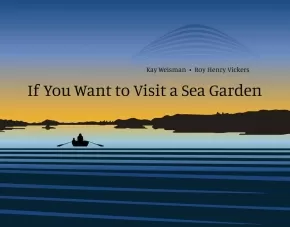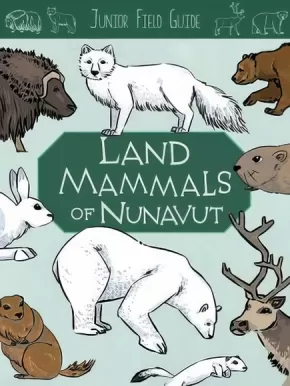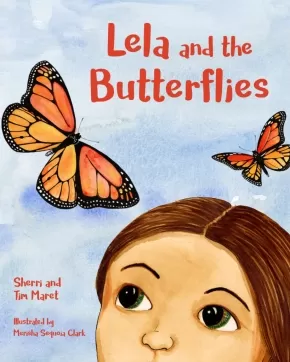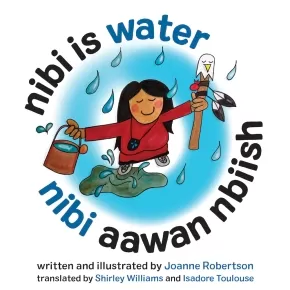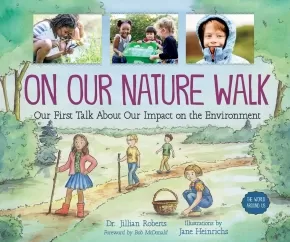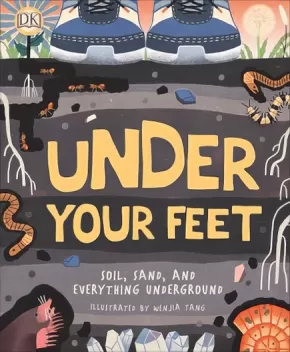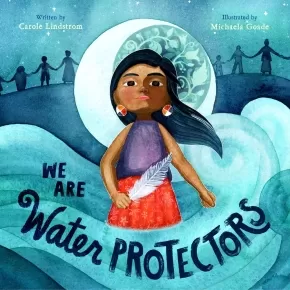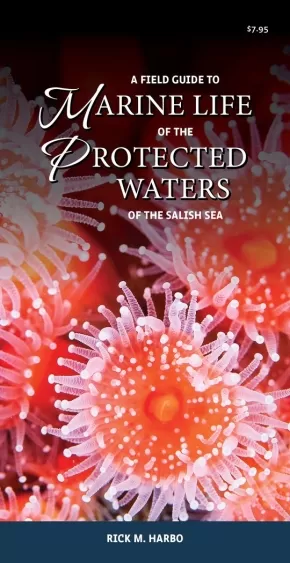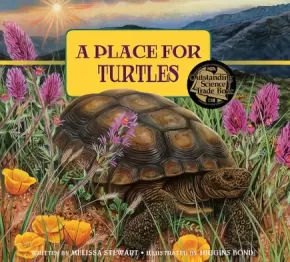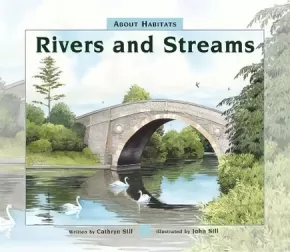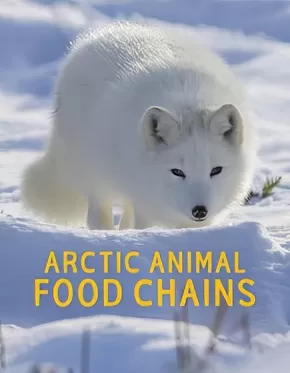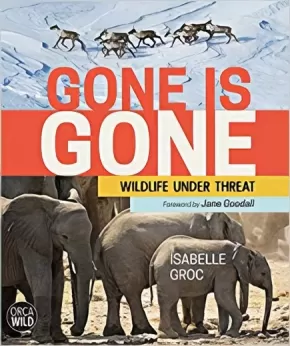
Environment
91
-
105
of
175 Results;
Sort By
Go To
of 12
If You Want to Visit a Sea Garden
$18.99
Format:
Hardcover
Text Content Territories:
Indigenous Canadian;
ISBN / Barcode: 9781554989706
Synopsis:
Synopsis:
Discover the wonder of ancient sea gardens on the Northwest Coast
Sea gardens have been created by First Peoples on the Northwest coast for more than three thousand years. These gardens consist of stone reefs that are constructed at the lowest tide line, encouraging the growth of clams and other marine life on the gently sloped beach.
This lyrical story follows a young child and an older family member who set out to visit a sea garden early one morning, as the lowest tides often occur at dawn. After anchoring their boat, they explore the beach, discover the many sea creatures that live there, hear the sputtering of clams and look closely at the reef. They reflect on the people who built the wall long ago, as well as those who have maintained it over the years. After digging for clams, they tidy up the beach, then return home.
An author’s note provides further information about sea gardens (also known as clam gardens), which yield a reliable food source and have been traditional places of learning. They have been found along the Pacific coast, from Alaska to British Columbia to Washington State, and some of these gardens are being restored today.
The manuscript has been vetted and approved by the scientists of the Clam Garden Network and Kwaxsistalla Wathl’thla Clan Chief Adam Dick. Roy Henry Vickers, whose ancestry includes the Tsimshian, Haida and Heiltsuk First Nations, has created hauntingly beautiful images to accompany the text.
Reviews
“The text and illustrations combine grace and knowledge, offering a stunning nonfiction picture book that celebrates First Nations cultural traditions.” — School Library Journal
“This engaging tale is a natural for lessons about ecology and units on Indigenous peoples, and the illustrations will pop for story-hour audiences.” — Booklist
Educator Information
Recommended for ages 5 to 8.
Recommended in the Indigenous Books for Schools 2020/2021 resource list as being useful for grades K to 3 for Science and Social Studies.
Additional Information
32 pages | 10.25" x 8.50"
Land Mammals of Nunavut
$12.95
Artists:
Format:
Paperback
Text Content Territories:
Indigenous Canadian; Inuit;
ISBN / Barcode: 9781774500545
Synopsis:
Synopsis:
What do you know about Arctic land mammals?
From lemmings to polar bears, there are a lot of different types of land mammals living in Nunavut. This non-fiction science book provides information about what the mammals look like, where they live, what they eat, and other interesting facts about them, along with colourful illustrations and photographs.
Educator & Series Information
Recommended for ages 8 to 10.
This book is part of the Junior Field Guide series. Perfect for learning all about living things in the Arctic! These Junior Field Guides give information and interesting facts about the different animals that live in Nunavut.
Includes some traditional knowledge about the animals included.
Curriculum Connections: Supports science units on the natural environment and animals of the arctic.
Simpler, classroom-ready version of the adult books Terrestrial Mammals of Nunavut. Includes one spread per species, with information like where they live, what they eat, what they look like, and other facts. Includes a glossary of English biological terms at the back.
Additional Information
32 pages | 7.50" x 10.00" | Paperback
Lela and the Butterflies
$20.95
Artists:
Format:
Hardcover
ISBN / Barcode: 9781630763824
Synopsis:
Synopsis:
Lela loves butterflies. When Lela takes a nature walk with Ranger Maggie, she learns that butterflies need help. Lela's small steps in butterfly conservation start with a butterfly garden of nectar and host plants, but she doesn't stop there and ends up spreading her love for butterflies throughout the community. A simple guide to planting a butterfly garden is also included.
Reviews
Beautifully written and illustrated, Lela and the Butterflies is jam-packed with interesting facts about butterfly biology, ecology and butterfly gardening, craftily woven into the story of a little girl named Lela who loves butterflies. The book is so entertaining and appealing that readers young and old will acquire butterfly knowledge without even realizing that they are learning. - Johanna Davey, Hershey Gardens
Educator Information
Recommended for ages 5 to 9.
Additional Information
32 pages | 8.49" x 10.36"
Nibi is Water (BB)
$12.95
Artists:
Format:
Board Book
Text Content Territories:
Indigenous Canadian; First Nations; Anishinaabeg; Ojibway;
Grade Levels: Preschool;
ISBN / Barcode: 9781772601329
Synopsis:
Synopsis:
Nibi is water and water is life.
A first conversation about the importance of Nibi—which means water in Anishinaabemowin (Ojibwe)—and our role to thank, respect, love, and protect it. Babies and toddlers can follow Nibi as it rains and snows, splashes or rows, drips and sips. Written from an Anishinaabe water protector’s perspective, the book is in dual language—English and Anishinaabemowin (Ojibwe).
Educator Information
Board Book for ages 0 - 3 / Preschool.
A board book for babies and toddlers that introduces the importance of water and water protection. Indigenous water protectors, like author Joanne Robertson, are highly respected environmentalists in Canada and across North America. Joanne Robertson is the author and illustrator of the award-winning picture book The Water Walker.
Dual-language: Anishinaabemowin (Ojibwe) and English. Dual-language books are important in all of our efforts to support the Truth and Reconciliation Commission of Canada's Call to Action, specifically the call to promote, support, and teach Indigenous languages.
Subjects: Character Education (Strong Female Role Models); Environmentalism; History & Social Studies (Canadian History, First Nations & Indigenous Peoples, Social Justice).
Translated by Shirley Williams and Isadore Toulouse.
Additional Information
28 pages | 7.00" x 7.00"
On Our Nature Walk: Our First Talk About Our Impact on the Environment
$19.95
Artists:
Format:
Hardcover
ISBN / Barcode: 9781459821002
Synopsis:
Synopsis:
This illustrated nonfiction picture book by child psychologist Dr. Jillian Roberts introduces children to the important topic of the environment. Crafted around a conversation between a grade-school-aged child and an adult, this inquiry-focused book using age-appropriate language and tone will help children shape their understanding of the natural world and how they participate in protecting it. Dr. Roberts starts the discussion with the types of pollution and trash that children might notice on a nature walk or a trip to the beach, how they are caused and how to work to improve things in their own lives and communities.
Educator & Series Information
The World Around Us series introduces children to complex cultural, social and environmental issues that they may encounter outside their homes, in an accessible way. Sidebars offer further reading for older children or care providers who have bigger questions. For younger children just starting to make these observations, the simple question-and-answer format of the main text will provide a foundation of knowledge on the subject matter.
This book discusses the environment through an organic conversation starting with a common observation and continuing with follow-up questions that would naturally come from a young child. Sidebars define larger concepts for further discussion with older or more curious children.
Subjects discussed or defined include littering, pollution, natural resources, human impact, sustainability, innovation, and renewable resources.
This work contains profiles of young innovators who are making a difference for the planet, including Ann Makosinski, Deepika Kurup, Param Jaggi, and Greta Thunberg.
Recommended Ages: 6-8
Additional Information
32 pages | 10.00" x 8.50" | colour illustrations
The Boreal Forest: A Year in the World's Largest Land Biome
$19.99
Artists:
Format:
Hardcover
Text Content Territories:
Indigenous;
ISBN / Barcode: 9781525300448
Synopsis:
Synopsis:
Combining lyrical storytelling with expertly researched informational text, this beautiful book provides a year-long tour of the planet's largest land biome --- one of our most important wildernesses.
The vast boreal forest spans a dozen countries in the northern regions like “a scarf around the neck of the world,” making it the planet's largest land biome. Besides providing homes for a diversity of species, this spectacular forest is also vitally important to the planet: its trees clean our air, its wetlands clean our water and its existence plays an important role in slowing global climate change. In this beautifully written book, award-winning author L. E. Carmichael explores this special wilderness on a tour of the forest throughout the four seasons, from one country to another. Evocative watercolor and collage artwork by award-winning illustrator Josée Bisaillon provides a rare glimpse of one of the world's most magnificent places.
With excellent STEM applications in earth science and life science, this enjoyable book aims to foster environmental awareness of and appreciation for this crucial forest and its interconnections with the entire planet. In a unique approach, the text features a lyrical fictional narrative describing the wildlife in a specific part of the forest, paired with informational sidebars to provide further understanding and context. Also included are a world map of the forest, infographics on the water cycle and the carbon cycle, a glossary, resources for further reading, author's sources and an index.
This book has been reviewed by experts and was written in consultation with Indigenous peoples who live in the boreal forest region.
Educator Information
Recommended for ages 8 to 12.
Curriculum: Ecosystem; Environment; Animals; Habitats; Water
Reading Levels:
Guided Reading S
Guided Reading Grade Leve l4
Lexile Level 860
Keywords: environmental awareness, Canada, Russia, United States, trees, plants, science, nature, ecology, animals, wildlife, fun facts, curiosity, STEM books for kids
Contains some Indigenous content.
Additional Information
48 pages | 9.50" x 12.30"
Under Your Feet: Soil, Sand, and Everything Underground
$18.99
Artists:
Format:
Hardcover
ISBN / Barcode: 9781465490957
Synopsis:
Synopsis:
Down where worms wriggle and microbes squirm, there's a whole world waiting to be discovered...
Under Your Feet delves beneath the Earth's surface and explores the diverse wonders hidden there. Encounter creatures of the deep and marvel at the mind-boggling size of the humongous fungus - the biggest organism in the world. Learn how one handful of ordinary soil contains more organisms than there are people on Earth, and carry out experiments using dirt from your own back garden.
Under Your Feet offers you the opportunity to expand your knowledge of the natural world and soil-dwelling creatures big and small. Bursting with colorful illustrations and photography, this is the perfect book for budding young plant experts, animal fanatics, and geologists, and anyone who is curious about the ground we walk on.
Educator Information
Recommended for ages 5 to 8.
Additional Information
64 pages | 9.31" x 11.31" | Hardcover
We Are Water Protectors
$24.99
Artists:
Format:
Hardcover
Text Content Territories:
Indigenous Canadian; First Nations; Anishinaabeg; Indigenous American; Native American; Anishinaabeg;
ISBN / Barcode: 9781250203557
Synopsis:
Synopsis:
Inspired by the many Indigenous-led movements across North America, Carole Lindstrom's bold and lyrical picture book We Are Water Protectors issues an urgent rallying cry to safeguarding the Earth’s water from harm and corruption.
Water is the first medicine.
It affects and connects us all . . .
When a black snake threatens to destroy the Earth and poison her people’s water, one young water protector takes a stand to defend Earth’s most sacred resource.
Featuring illustrations by Michaela Goade.
Educator Information
Recommended for ages 3 to 6.
Includes information on water protectors and the importance of water protection at the back of the book, as well as a glossary with a few words in different Indigenous languages, such as Ojibwe, Tlingit, and Lakota.
This book is available in French: Nous sommes les protecteurs de l'eau
Additional Information
40 pages | 10.00" x 10.00"
A Field Guide to Marine Life of the Protected Waters of the Salish Sea
$7.95
Format:
Pamphlet
Reading Level: N/A
ISBN / Barcode: 9781550178531
Synopsis:
Synopsis:
A Field Guide to Marine Life of the Protected Waters of the Salish Sea includes the most commonly observed species in the tide pools and protected waters of the Salish Sea—that intricate network of coastal waterways spanning southern BC and northwestern Washington. Covering invertebrates, fish and seaweeds, this guide includes key identification features, fun facts and habitat, as well as seventy colour photographs. Water-resistant and compact, this guide is easy to pack on any trip to the shore and perfect for curious minds of all ages.
Rick Harbo is one of the Pacific Northwest’s leading marine writers and photographers.
Additional Information
2 pages | 37.00" x 9.00" | 75 photographs | Pamphlet
A Place for Turtles
$10.95
Artists:
Format:
Paperback
ISBN / Barcode: 9781682630976
Synopsis:
Synopsis:
Turtles outlived the dinosaurs, but today they are one of the most threatened species of vertebrae on Earth. How can we help?
In simple yet engaging language, acclaimed science writer Melissa Stewart showcases twelve types of North American turtles, from the familiar box turtle to the majestic loggerhead turtle. Her clear narrative shows the threats these turtles face, and informative sidebars describe a wide variety of efforts to save them. Featuring glorious full-color illustrations by Higgins Bond and range maps for each turtle, this is a perfect choice for budding scientists, environmentalists, and nature lovers.
Awards
- Green Earth Book Award (Nonfiction) / The Nature Generation
- NSTA Recommends / National Science Teachers Association
- Outstanding Science Trade Books for Students K-12 / NSTA / CBC
Reviews
“While the topic of the book is clearly turtles, the narrative…will get young minds thinking about the interconnectedness of organisms, ecology, and the impact of human actions on the world around them. A classroom-friendly blend of story and fact.” ―Booklist
“A perfect resource.” ―National Science Teachers Association
Educator Information
This nonfiction picture book is recommended for ages 6 to 10.
Additional Information
32 pages | 10.25" x 9.25"
About Habitats: Rivers and Streams (5 in Stock)
$16.95
Artists:
Format:
Hardcover
ISBN / Barcode: 9781682630914
Synopsis:
Synopsis:
This beginner's guide explores the major attributes of rivers and streams and showcases their remarkable diversity using examples of waterways from around the globe.
In this addition to the About Habitats series, award-winning author Cathryn Sill uses simple, easy-to-understand language to teach children what rivers and streams are and explain how various species of animals and plants have adapted to life in or along these waterways. John Sill's detailed, full-color illustrations show the characteristics of the world's different rivers and streams (from the mountain streams of the Alps to the mighty Amazon River in South America).
A glossary and afterword provide further fascinating details about rivers and streams to inspire readers to learn more.
Educator & Series Information
Recommended for ages 3 to 7.
This book is a part of the About Habitats series, which introduces children to specific habitats and their living and nonliving components.
Additional Information
48 pages | 10.25" x 8.75" | Hardcover
Arctic Animal Food Chains - Nunavummi Reading Series
$10.95
Format:
Paperback
ISBN / Barcode: 9781772669015
Synopsis:
Synopsis:
Learn about food chains in the Arctic!
This book explores the concept of the food chain using Arctic plants and animals.
Educator & Series Information
This book is part of the Nunavummi Reading Series, a Nunavut-developed series that supports literacy learning while teaching readers about the people, traditions, and environment of the Canadian Arctic. It is a Level 13 book in the series.
Nunavummi Reading Series books have also been officially levelled using the Fountas & Pinnell Text Level Gradient™ Levelling System. F&P Level of this book: O.
Curriculum Connections: Language and Literacy; Diversity; Environmental Awareness; Life Systems
Recommended for ages 7 to 9.
Additional Information
32 pages | 7.00" x 9.00"
Facts about Nunavut - Nunavummi Reading Series
$7.95
Format:
Paperback
Text Content Territories:
Indigenous Canadian; Inuit;
ISBN / Barcode: 9780228702696
Synopsis:
Synopsis:
Learn some interesting facts about Nunavut.
This book gives simple facts about Nunavut, along with colourful photographs.
Educator & Series Information
This book is part of the Nunavummi Reading Series, a Nunavut-developed series that supports literacy learning while teaching readers about the people, traditions, and environment of the Canadian Arctic. It is a Level 7 book in the series.
Nunavummi Reading Series books have also been officially levelled using the Fountas & Pinnell Text Level Gradient™ Levelling System. This book's F&P Level is D.
Curriculum Connections: Language and literacy; Diversity; Indigenous perspectives; Environmental awareness; History
Recommended for ages 5-7.
Additional Information
12 pages | 9.00" x 6.00"
Gone is Gone: Wildlife Under Threat
$24.95
Format:
Hardcover
ISBN / Barcode: 9781459816855
Synopsis:
Synopsis:
Act for the wild before it's too late!
Gone is Gone looks at why species become endangered, how scientists are learning about endangered wildlife, what people are doing to conserve species and ways young people can help.
The book is richly illustrated with unique photos that Isabelle has taken over many years of observing endangered species in the field alongside the people who work to conserve them. Throughout, the author shares enchanting encounters and personal field stories: watching narwhals socialize in the Canadian Arctic, getting close to a Laysan albatross raising chicks on a remote Hawaiian island, spotting a rhinoceros on safari and even swimming with sea lions in the Galápagos Islands.
Gone is Gone will inform, intrigue and inspire readers to take small steps toward big changes for endangered species around the world.
Reviews
“Animals won’t survive unless people care. I wish this book was available when I started my career in wildlife conservation. It’s got all the information you need to understand the dangers animals face, and how people work to fix those problems so that wild animals can survive. Such people are called conservationists. After reading this excellent book that explains what animals need and what conservationists do, you just might decide to be a conservationist yourself. I hope so. Animals need you.” — Carl Safina, author of Beyond Words: What Animals Think and Feel
“You don’t need to be a child to read this fascinating, informative and personal book about the unique and beautiful wild creatures with whom we share the earth. I, a child no longer, have read it twice, following Isabelle as she traveled far and wide and sharing her joy, her sadness and her growing fears about the survival of so many irreplaceable species and the decimation of their wild homes. I share her belief in the animal as an individual. Everyone should read this book. And I mean everyone. If you have never thought or cared about the survival of wildlife, large and small, I believe you will care after you read this book. I beg you to care—before it is really too late.” — Virginia McKenna, co-founder, Born Free Foundation
Educator Information
Recommended for ages 9 to 12.
This book is part of the Orca Wild series, which explores the lives of the creatures with whom we share the world and asks readers to consider the effects -- both positive and negative -- that humans have on vulnerable animal populations and habitats.
Keywords: saving endangered species, environmental activism, ecosystem awareness, habitat protection, conservation
Additional Information
128 pages | 7.50" x 9.00"
Great Bear Rainforest: A Giant-Screen Adventure in the Land of the Spirit Bear
$29.95
Format:
Hardcover
Text Content Territories:
Indigenous;
ISBN / Barcode: 9781459822795
Synopsis:
Synopsis:
In the northwest corner of British Columbia, between the Alaska–BC border and the northern tip of Vancouver Island, lies a land of forest green and sparkling blue. From massive whales to tiny herring, spirit bears to sea wolves, an incredibly diverse array of wildlife calls this land home. Part of the largest coastal temperate rainforest in the world, the Great Bear Rainforest is one the last untouched places on Earth.
Experience this magical place through the power of IMAX® and the giant screen. Learn about the people who make their home in the Great Bear Rainforest and are committed to preserving and protecting it. Hear how Indigenous youth are coming together and taking responsibility for this place they call home. Go behind the scenes of the production of the film to learn about the incredible challenges of filming in such difficult conditions and feel the wonder that comes from experiencing this wild place.
Reviews
"The authors' passion for the Great Bear Rainforest, its inhabitants and for shaping attitudes toward protecting its special nature are evident throughout this appealing book…Will make a fascinating addition to your coffee table collection, great for browsing before and after viewing the IMAX film. Highly Recommended." — CM: Canadian Review of Materials, March 2019
"This beautifully photographed book…provides a sense of immediacy, conveying the authors' impassioned respect for the pristine region." — Publishers Weekly, March 2019
Educator Information
Ages 9 -12.
There is some Indigenous content in this work, but it is not the sole focus.
Additional Information
96 pages | 10.75" x 10.00"
Sort By
Go To
of 12

